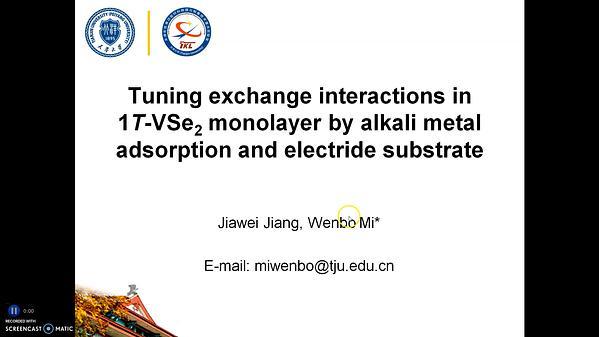
Premium content
Access to this content requires a subscription. You must be a premium user to view this content.

technical paper
Anatomy of Type x Spin
Current-induced type-x spin-orbit-torque (SOT) switching configuration describes the orthogonal relationship between the magnetic easy-axis (EA) of ferromagnetic (FM) layer and the injected spin polarization σ from heavy metal (HM) layer, which has potential to eclipse the conventional type-y scenario (EA∥σ) at short pulse regime 1,2.
In this study, we systematically investigate type-x SOT switching properties in HM/FM heterostructures. First, through macrospin simulations, we demonstrate that deterministic type-x switching can be realized by applying an assisting z-direction external field (Hz) or by introducing a canted EA. From current pulsed width (tpulse) dependent simulations, we observe that the critical switching current (Isw) of type-x is indeed smaller than that of type-y in the sub-ns regime Fig. 1(a). By further considering a positive field-like SOT (FLT) in the simulated system, type-x switching mode results in a lower Isw than that of type-y when tpulse < 10 ns Fig. 1(b), suggesting the advantage of employing the type-x design with material system having sizable FLTs.
Accordingly, we choose W/CoFeB bilayer structure, which has a sizable FLT, to experimentally observe type-x SOT switching in micron-sized devices. By utilizing current-sensed differential planar Hall signal 3, the field-free type-x switching is observed for both positively and negatively y-canted devices Fig.2 (a) and (b), with opposite switching polarities. A z-direction internal field originated from the canted EA in concert with the damping-like SOT is observed by analyzing Hz-assisted switching phase diagram. Under the zero-field condition, as canting angle (φEA) increases, the switching dynamics evolves from a pro-type-x scenario to a pro-type-y scenario Fig.2 (c) and (d). Our systematic work therefore verifies the advantage of canted EA for field-free type-x SOT applications, which can be informative for designing more efficient next generation SOT-MRAMs.
References
1 S. Fukami, T. Anekawa, C. Zhang, and H. Ohno, A spin-orbit torque switching scheme with collinear magnetic easy axis and current configuration, Nat. Nanotechnol. 11, 621 (2016).
2 S. Fukami, T. Anekawa, A. Ohkawara, Z. Chaoliang, and H. Ohno, A sub-ns three-terminal spin-orbit torque induced switching device, IEEE Symposium on VLSI Technology, 61 (2016).
3 G. Mihajlović, O. Mosendz, L. Wan, N. Smith, Y. Choi, Y. Wang, and J. A. Katine, Pt thickness dependence of spin Hall effect switching of in-plane magnetized CoFeB free layers studied by differential planar Hall effect, Appl. Phys. Lett. 109, 192404 (2016).


